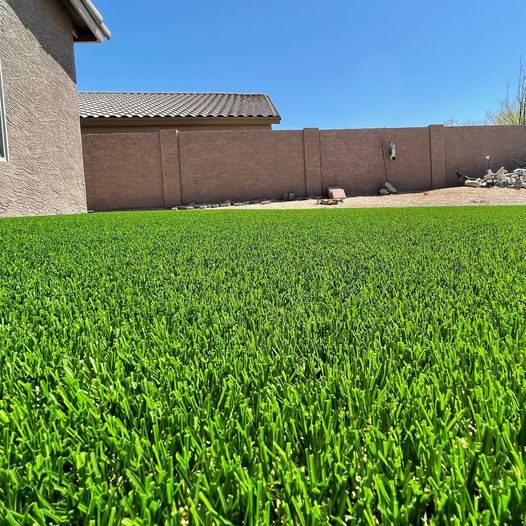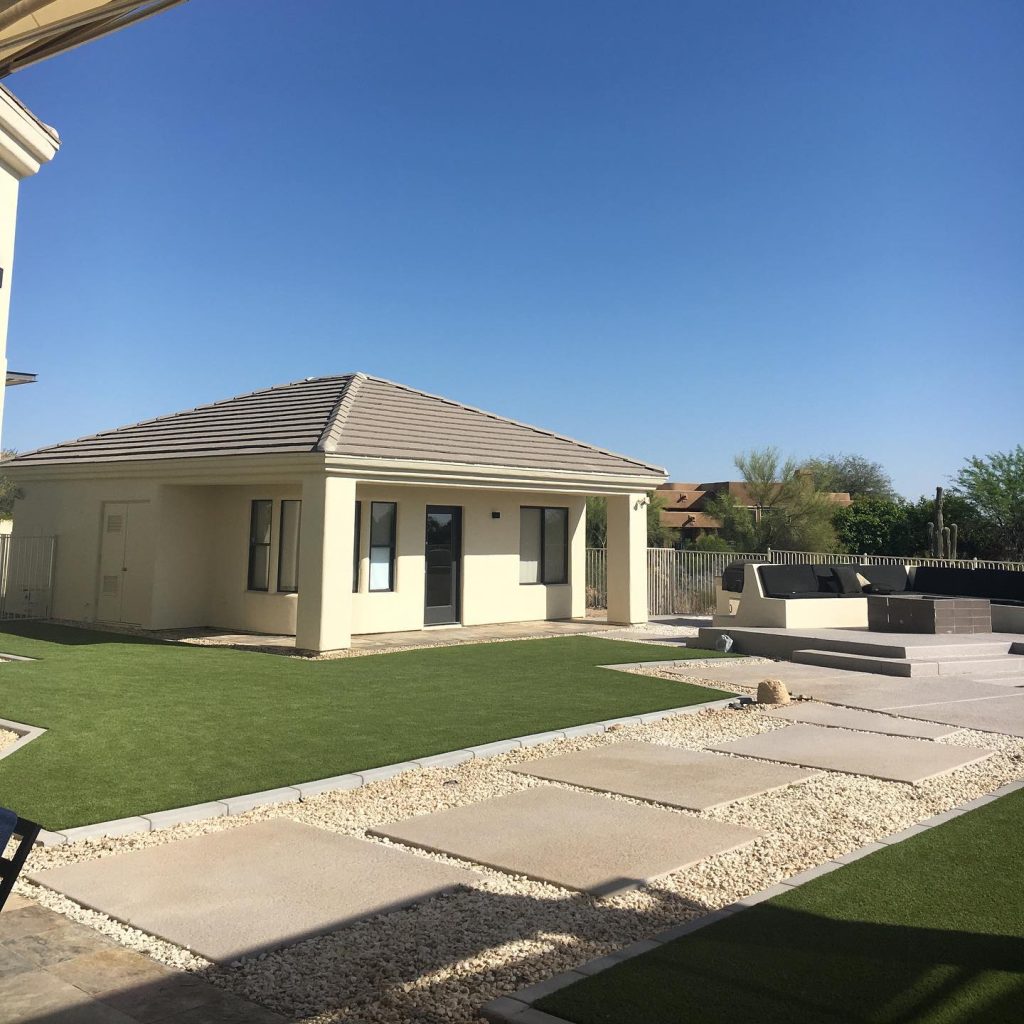 It’s hard to even tell that it’s synthetic grass – but will it melt in the sun? Not except under very specific circumstances.
It’s hard to even tell that it’s synthetic grass – but will it melt in the sun? Not except under very specific circumstances.
With heat waves across the nation causing power outages and record-high temperatures – it reached 105 degrees Fahrenheit in Portland recently – you might be wondering whether it’s safe to install artificial grass in your home. The good news is, artificial grass won’t melt at 105 degrees, or even 150 degrees.
What’s the Melting Point?
Most grasses these days are made of nylon or polyethylene, which have high melting points. However there will be differences in each product and the melting point of artificial grass can range from 175-200 degrees Fahrenheit. That means as long as Earth is livable, your artificial grass isn’t going to melt just from high temperatures or hot sun. If the apocalypse hits, or the sun turns into a deadly laser and it’s no longer safe to go outside, turf melt is probably the least of our worries.
When Can Artificial Grass Melt?
There are two situations where temperatures can reach 175 degrees or higher and turf can melt. The first one is grilling. Grilling over artificial grass – especially with charcoal – can generate enough heat to melt your grass. It’s never a good idea to place a grill directly over artificial grass. If you plan on doing a lot of grilling, or have a grill installed in a particular location, consult with your installers when designing your backyard. There are safe ways to grill with artificial grass, especially if you have a gas grill that won’t run the risk of dropping hot coals onto your lawn. In either case, if you love grilling, think about that during the design process and make sure you have some designated grilling space that won’t end up overheating your artificial lawn.
The second (and more common) situation where turf can melt is from window reflections. This doesn’t happen often either! In fact it really only happens with energy efficient windows called Low-E windows, which is short for “Low Emissivity.” These windows use a coating as part of the outer pane that reflects heat energy back in order to keep glass cool. It’s a great, energy efficient solution that will save you money – but it can also reflect the sun’s energy back onto your grass, creating hot spots that easily reach 175 degrees and melt your turf. If you see melted spots outside your windows, then this is likely the cause.
These windows are a serious problem. Reflections from Low-E windows have melted vinyl siding and even cars! Melting artificial grass doesn’t mean you have a cheap product. It’s just not possible for many materials to survive in 175 degree+ temperatures for long.
 A landscape design that places grass away from windows is one way to ensure that your turf won’t melt.
A landscape design that places grass away from windows is one way to ensure that your turf won’t melt.
How to Prevent Artificial Grass from Melting?
An ounce of prevention is worth a pound of cure. If you have Low-E windows, or plan on installing them in the future, you need to plan accordingly. There are two ways to solve this problem before it happens – with a window coating or through design choices.
The best way to avoid melted turf is to design away from your windows. Installing artificial grass away from the house is a good way to ensure that it won’t be melted by your Low-E windows. Walk around your house on a sunny day and look for any reflections on the ground. These reflections may not be as visible on grass as they are on concrete, but you’ll probably see small brown spots on your grass if you’ve had these windows for a while. These high temperatures aren’t good for any kind of grass. If you find brown spots or can see reflections on the concrete around your home, thnk about ways to potentially plan around this, possibly by using gravel or a combination of xeriscaping, and be sure to
If designing around the problem isn’t a solution, never fear! You can coat your Low-E windows with a number of different types of coatings to prevent the reflections. Alternatively you can install screens – but it’s possible you don’t want a permanent screen on your window. There are many coating and screen options on the market and we won’t make any particular recommendations, but reports indicate that they do work and can keep your grass from melting.
My Grass Melted! What Can I Do?
If you didn’t didn’t plan around your Low-E windows prior to installation (or maybe you weren’t even aware that you had Low-E windows) never fear. It won’t require replacing your entire lawn. Artificial grass comes in rolls that are stapled and glued together and you will be able to replace only those sections without having to replace the entire yard. However it’s important to get a solution for your windows first, or you’ll end up right back where you started! Contact your installer out to get an estimate and look for window solutions to reduce the glare from your windows.